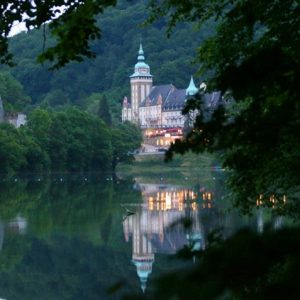Famous Hungary?
 When we spin the Rubik’s Cube, open another bottle of Tokay wine or a can of “Globus”, we hardly think about the tourist possibilities of Hungary, which gave us the above-mentioned gifts. But believe me, rest in this country, close to us in many senses, whether it is a sightseeing, gastronomic or wellness, can combine all these lovely and already known to several generations of Russians Hungarian pranks – small carts plus an enormous wagon of unexplored but accessible to everyone and pleasures. Are you ready to call Hungary a famous country for you? Come and call!
When we spin the Rubik’s Cube, open another bottle of Tokay wine or a can of “Globus”, we hardly think about the tourist possibilities of Hungary, which gave us the above-mentioned gifts. But believe me, rest in this country, close to us in many senses, whether it is a sightseeing, gastronomic or wellness, can combine all these lovely and already known to several generations of Russians Hungarian pranks – small carts plus an enormous wagon of unexplored but accessible to everyone and pleasures. Are you ready to call Hungary a famous country for you? Come and call!
Of course, speaking of Hungary, we, first of all, think about its capital. Indeed, Budapest is a unique city. The history of numerous wars and invasions, constant destruction and restructuring created Budapest today, with a mixture of styles, born in those periods when a proud and resilient nation lovingly restored its city, city of charm and character, both European and Hungarian at the same time. The collection of palaces, churches and monuments of Budapest has been declared by UNESCO as World Cultural Heritage.
Budapest owes its charm to picturesque surroundings, beautiful nature and magnificent architecture. Here, the historical monuments of the ancient Roman province coexist with the Baroque houses that preserved medieval fragments, the churches of the 18th century – with the buildings in the Art Nouveau style, and the palaces in the style of classicism – with modern hotels.
But the sophisticated traveler is not looking for adventures in megalopolises, how beautiful and interesting they are. The spirit of the country for suffering extraordinary impressions lives in the provinces: in castles hidden by green massifs, in small cozy towns, in fishing villages, in their noisy and quiet taverns, in babbling brooks and deaf caves and, of course, if we are talking about Hungary natural thermal springs. Do you know Eastern Hungary – the closest Hungary for us from all existing Hungary?
Hajdúszoboszlo
Or here’s another question: is it difficult for an ordinary person to pronounce the name of the city Haidusoboslo? It’s over, easy! Provided, of course, that this person was either trained on the characters Tofsla and Wifsle by the writer Tove Jansson, or simply Hungarian. Indeed, it is logical to assume that for someone, namely Hungarian, it is easy to pronounce without difficulty the name of the famous city of Eastern Hungary, a resort city, which gained fame as the “Mecca of rheumatics, a paradise for vacationers” in 1925 due to the high efficiency of its healing waters.
Oil rush has not bypassed Hungary, but this small country was incredibly lucky: if most countries, after a long and vain search for energy in their territories, turned out to be “broken troughs”, then the Hungarians, not finding “black gold,” found a completely different “energetic” – thermal waters. Moreover, no matter what shred of Hungarian sotok, the rigs would direct their stings, here and there hot springs of various shades and chemical compositions burst out of the depths of the Magyar land instead of a black fountain.
In the same Hajdúszoboszlo, in the notorious 1925, unfortunately, energy workers and to the delight of rheumatics from a well of 1,100 meters deep hit a healing cocktail of: hydrocarbon salts, iodine, bromine, fluorine, magnesium, and more than 20 other soluble mineral substances, including bitumen, which, together with iodine, gives a dark brown color to the waters of Hajdúszoboszló.
Today, the hydropathic clinic in Hajdúszoboszló is the largest balneological complex in Hungary and offers to the tourists more than forty kinds of different balneotherapy procedures. Along with the procedures, mud therapy, therapeutic gymnastics, underwater traction in the pool, massage, physiotherapy are used here. And for those who are far from this terminology, there are complexes of pools with artificial waves and other modern aqua effects, children’s pools, a jacuzzi, as well as the largest “Eastern Mediterranean beach” in Eastern Europe.
Debrecen
Territorially, Hajdúszoboszló is a member of the Hajdu-Bihar area, the administrative center of which is Debrecen. Debrecen is the second most populous city after Budapest in the country, known for its rich architecture and abundance of educational institutions and, above all, for its university.
The University of Debrecen is one of the most famous and oldest educational institutions in the country. Founded in 1538 as a Calvinist college, in 1912 it was transformed into the Royal University. Today it includes 11 faculties and 2 colleges, more than 20,000 students study there. The building of the former Reformed College currently houses the Museum of the History of Protestantism in Hungary, as well as the largest library of historical and religious literature.
The main “tourist place” of Debrecen is occupied by the Big Church, or the Calvinistic Cathedral, built in the neoclassical style in 1821. This is the largest Protestant church in the country. Not far from it there is the Cathedral of PR in 1715, built by the Order of PR. Anne.



